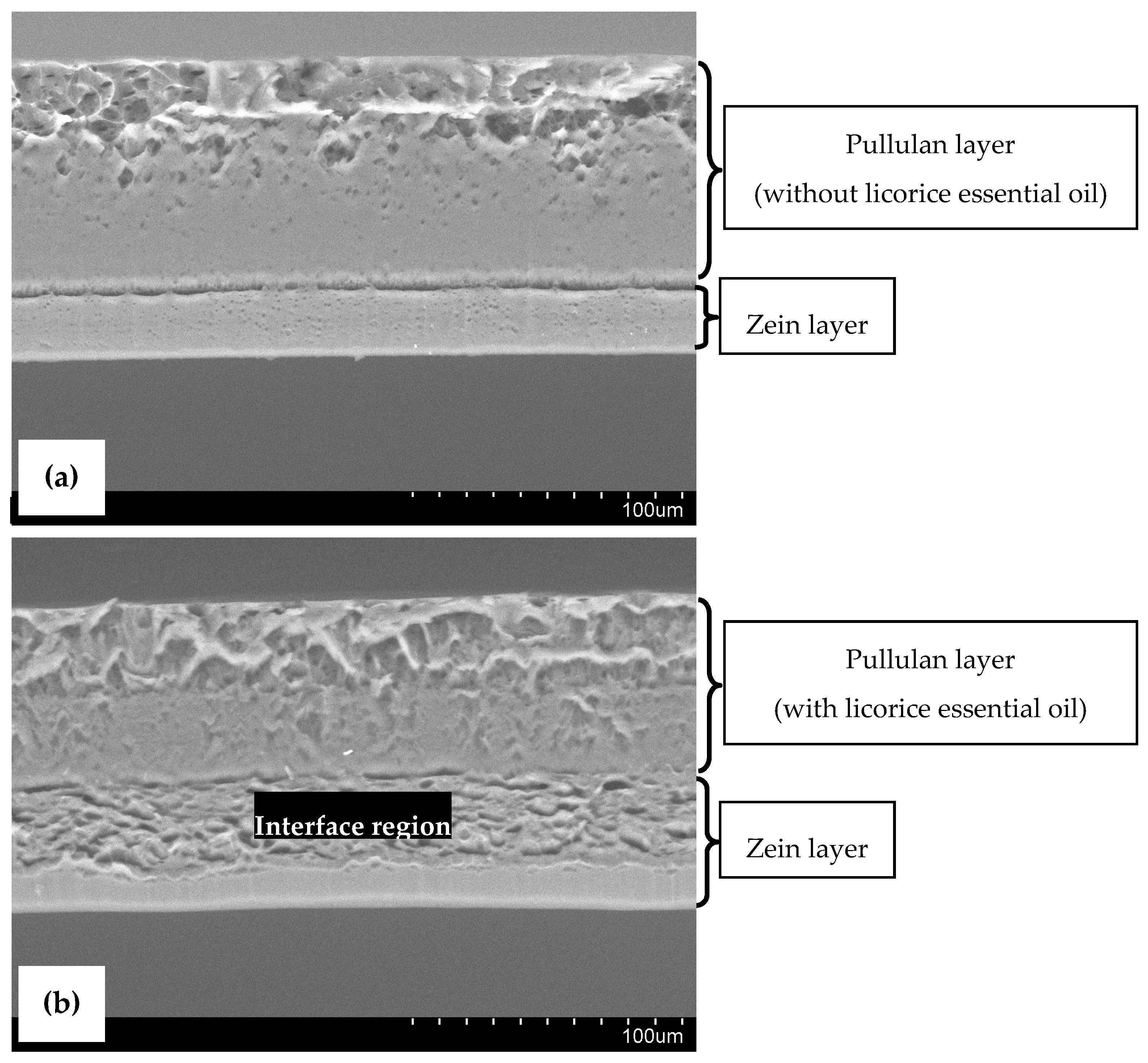Design and Characterization of Bioactive Bilayer Films: Release Kinetics of Isopropyl Palmitate

Active packaging incorporating antioxidants and antimicrobials is creating a niche in the market and becoming increasingly important. The main goal of this work was the design of bioactive bilayer films (zein/pullulan) incorporating licorice essential oil. The bilayer films were fully characterized in terms of their chemical, physical, barrier, antioxidant, and antimicrobial properties. Furthermore, the release kinetics of isopropyl palmitate, the major compound of the licorice essential oil, was evaluated by HPLC-DAD (high-performance liquid chromatography coupled to diode-array detector). Scanning Electron Microscopy (SEM) micrographs of cross-sections of the bilayer films clearly show the two layers of the films. Besides presenting the capacity to scavenge free radicals and to inhibit the lipid peroxidation, the developed bilayer films were also able to inhibit the growth of known foodborne pathogens (Enterococcus faecalis and Listeria monocytogenes). The release kinetics profile of isopropyl palmitate from bilayer films incorporating licorice essential oil demonstrated that in 50% ethanol at room temperature, the release was more effective, suggesting that the bilayer films will be more efficient if applied to package semi-fatty food.
Download the full publication here: Design and Characterization of Bioactive Bilayer Films- Release Kinetics of Isopropyl Palmitate
or continue reading here: Luís, Â.; Gallardo, E.; Ramos, A.; Domingues, F. Design and Characterization of Bioactive Bilayer Films: Release Kinetics of Isopropyl Palmitate. Antibiotics 2020, 9, 443.
Keywords: bilayer films; zein; pullulan; licorice essential oil; isopropyl palmitate; antioxidant activity; antibacterial properties

